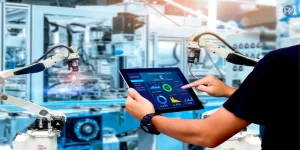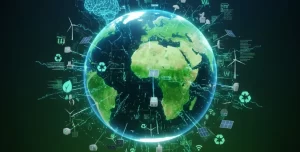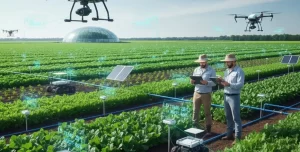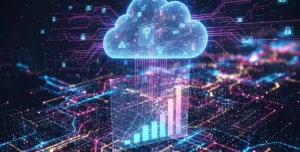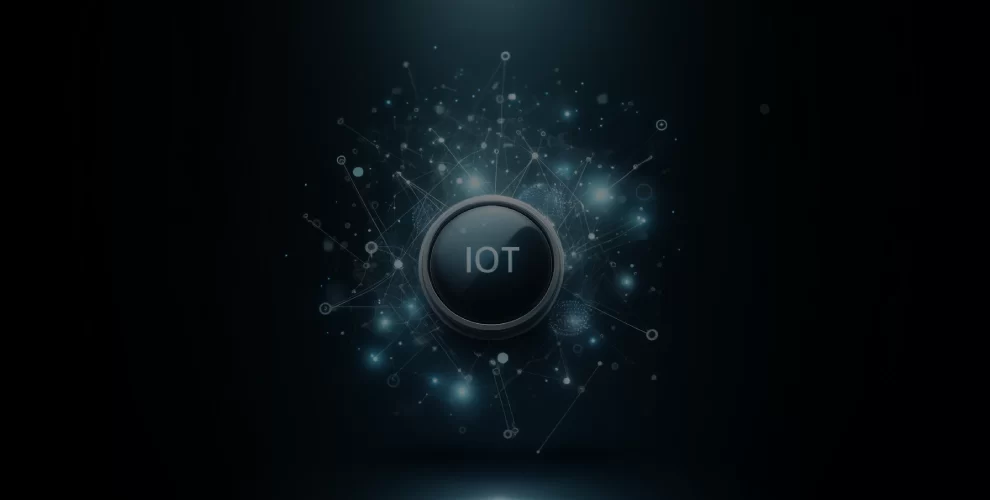
What is the Internet of Things (IoT) and How Does It Work?
Table of Contents
Introduction
Welcome to WikiGlitz, your go-to source for insightful technology content. Today, we’re diving into the fascinating world of the Internet of Things (IoT).
IoT is transforming the world around us. Whether it’s smart home devices making life more convenient or advanced industrial applications boosting efficiency, IoT is at the heart of modern innovation.
In this article, we’ll explore what IoT is, how it works, and why it’s so significant in our daily lives and various industries.
Key Takeaways
- IoT Simplifies Daily Life: From smart homes to wearable devices, IoT enhances convenience and efficiency.
- Industrial Impact: IoT revolutionizes industries like healthcare, manufacturing, and agriculture through automation and data analytics.
- Future Prospects: Continuous advancements in IoT promise even greater integration and innovation across all sectors.
What is the Internet of Things (IoT)?
It is the huge network of physical things with sensors, software, and other technologies that help in exchanging data with other devices over the Internet.
These “things” can range from everyday domestic goods to advanced industrial tools. The major purpose of the Internet of Things is to improve the ability to monitor, control, and automate numerous operations by collecting and analyzing data in real time.
How Does IoT Work?
IoT operates through a series of interconnected components that work together seamlessly:
- Sensors/Devices: These are the physical elements that collect data from the environment. Sensors can measure various parameters such as temperature, motion, light, and more.
- Connectivity: The data collected by sensors is transmitted to a cloud infrastructure or local server through various communication protocols, such as Wi-Fi, Bluetooth, Zigbee, or cellular networks.
- Data Processing: Once the data reaches the cloud or server, it is processed using algorithms to extract meaningful insights. This step may involve data cleaning, aggregation, and analysis.
- User Interface: The processed data is then presented to the end user through a user interface, which could be a mobile app, web application, or other display formats.
Key Technologies Enabling IoT
Several key technologies are critical in enabling IoT:
- Wireless Communication: Technologies like Wi-Fi, Bluetooth, and Zigbee facilitate the seamless transfer of data between devices and cloud services.
- Cloud Computing: Provides the infrastructure needed to store and process large volumes of data generated by IoT devices.
- Big Data and Analytics: Tools and techniques for handling and analyzing massive datasets, essential for deriving insights from IoT data.
- Artificial Intelligence (AI) and Machine Learning (ML): Enhance IoT by enabling predictive analytics and decision-making processes based on data patterns.
IoT in Everyday Life
Smart Homes
One of the most common applications of IoT in everyday life is the smart home. Smart home devices such as thermostats, lighting systems, and security cameras are interconnected and can be controlled remotely via a smartphone or computer.
Smart lighting systems can be controlled with voice commands or set to turn on and off based on occupancy.
Wearable Devices
Wearable devices, such as smartwatches and fitness trackers, are another popular application of IoT.
These gadgets monitor a variety of health data, including heart rate, steps taken, and sleep habits, to provide users with important insights into their overall health. They can also communicate with other devices and platforms, allowing users to track and share their health data over time with healthcare providers.
IoT in Various Industries
Healthcare
IoT is revolutionizing healthcare by enabling remote patient monitoring and the use of smart medical devices.
Wearable health monitors can track vital signs and send data to healthcare professionals in real-time, allowing for continuous patient monitoring and timely interventions. Smart pills with embedded sensors can also monitor medication adherence and effectiveness, improving patient outcomes.
Manufacturing
In the manufacturing sector, IoT enables the creation of smart factories. IoT devices can track machine performance and anticipate maintenance requirements, minimising downtime and increasing efficiency.
Sensors on production lines can also track the quality of products in real-time, ensuring higher standards and reducing waste.
Agriculture
IoT applications in agriculture, known as precision farming, help farmers optimize their operations.
Sensors placed in fields can monitor soil moisture, nutrient levels, and weather conditions, providing data that helps farmers make informed decisions about irrigation and fertilization. Livestock monitoring systems can track the health and location of animals, improving herd management and productivity.
Case Study 1: Smart Cities
Description of IoT Applications in Smart City Initiatives
Cities use IoT technology to improve the quality of living.
This includes smart traffic management systems that optimize traffic flow and reduce congestion, smart street lighting that adjusts brightness based on pedestrian activity, and environmental monitoring systems that track air quality and noise levels.
Benefits and Challenges
The benefits of IoT in smart cities include increased efficiency, reduced energy consumption, and improved public safety.
However, challenges such as data privacy, cybersecurity, and the high cost of implementation need to be addressed to fully realize the potential of IoT in urban environments.
Case Study 2: Connected Vehicles
Overview of IoT in the Automotive Industry
The automotive industry is leveraging IoT to create connected vehicles that enhance safety, efficiency, and the overall driving experience.
These vehicles are equipped with sensors and internet connectivity that allow them to communicate with other vehicles, infrastructure, and external systems. This communication facilitates advanced driver-assistance systems (ADAS), real-time traffic information, and predictive maintenance alerts.
Benefits of Connected Cars and Autonomous Driving
Connected cars offer numerous benefits, including improved road safety through collision avoidance systems, optimized fuel consumption via smart route planning, and enhanced convenience with features like remote diagnostics and over-the-air updates.
Autonomous vehicles, powered by IoT and AI, have the potential to significantly reduce traffic accidents caused by human error and provide mobility solutions for individuals unable to drive.
Security and Privacy Concerns
Discussion on Potential Risks and Challenges
As IoT devices become increasingly integrated into our lives, security and privacy concerns have become more prominent. IoT devices can be vulnerable to hacking, leading to unauthorized access to personal data and control over connected systems.
The vast amount of data generated by IoT devices also raises concerns about data privacy and the potential for misuse by third parties.
Importance of Cybersecurity in IoT
Robust cybersecurity measures includes implementing strong encryption protocols, regularly updating device firmware, and educating users about safe practices.
Regulatory frameworks and industry standards can also help ensure that IoT devices are designed with security and privacy in mind from the outset.
Future of IoT
The future of IoT promises even greater advancements and integration across various sectors.
Key trends include the proliferation of 5G networks, which will enable faster and more reliable connectivity for IoT devices.
Potential Developments and Innovations
Innovations in AI and machine learning will further enhance the capabilities of IoT systems, enabling more sophisticated data analysis and decision-making processes.
We can also expect to see increased interoperability between IoT devices and platforms, fostering a more seamless and integrated user experience.
Conclusion
The Internet of Things (IoT) is transforming the way we live and work by connecting the physical and digital worlds.
From smart homes and wearable devices to connected cars and smart cities, IoT is enhancing convenience, efficiency, and innovation across various domains. However, addressing security and privacy concerns is crucial to realizing the full potential of IoT.
As technology continues to evolve, IoT will undoubtedly play an even more significant role in shaping our future.
Stay tuned to WikiGlitz for more insights and updates on the latest technology trends. We’ve brought you this comprehensive look at IoT, and we hope you found it informative and engaging.
FAQs
How does IoT work?
IoT works through interconnected components such as sensors, connectivity, data processing, and user interfaces. These elements work together to collect, transmit, and analyze data, providing valuable insights and automation.
What are some common applications of IoT?
Common applications include smart homes, wearable devices, smart cities, connected vehicles, and various industrial uses like healthcare, manufacturing, and agriculture.
What industries benefit the most from IoT?
Industries such as healthcare, manufacturing, agriculture, and automotive benefit significantly from IoT by enhancing efficiency, productivity, and innovation.
What are the security concerns related to IoT?
Security concerns include vulnerabilities to hacking, unauthorized access to personal data, and potential misuse of data.
Want to keep up with our blog?
Our most valuable tips right inside your inbox, once per month.
Error: Contact form not found.
WikiGlitz Team
Welcome to WikiGlitz, your ultimate destination for tech insights and innovation. Our expert team is dedicated to delivering free resources and professional advice on various technology topics, including Artificial Intelligence, Cyber Security, Cloud Computing, and more. We strive to empower our readers with up-to-date information and practical guidance, ensuring you stay ahead in the rapidly evolving tech landscape. At WikiGlitz, we are passionate about making complex technology accessible to everyone. Our team of seasoned experts curates content that is both informative and engaging, helping you understand and leverage the latest tech trends. Whether you're a tech enthusiast or a professional, WikiGlitz is your go-to source for reliable, expert-driven content. Join us on this journey to explore and embrace the future of technology.


